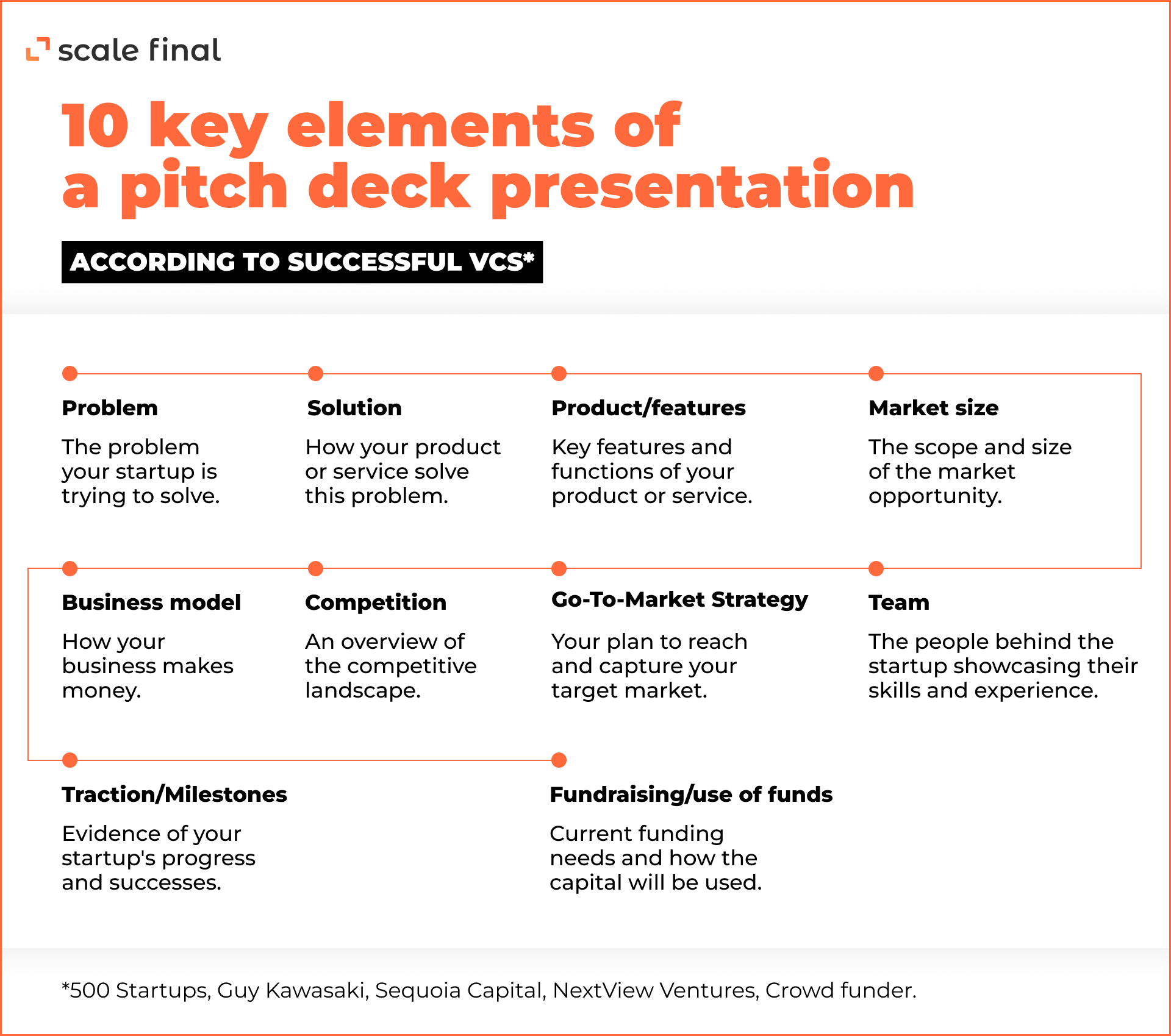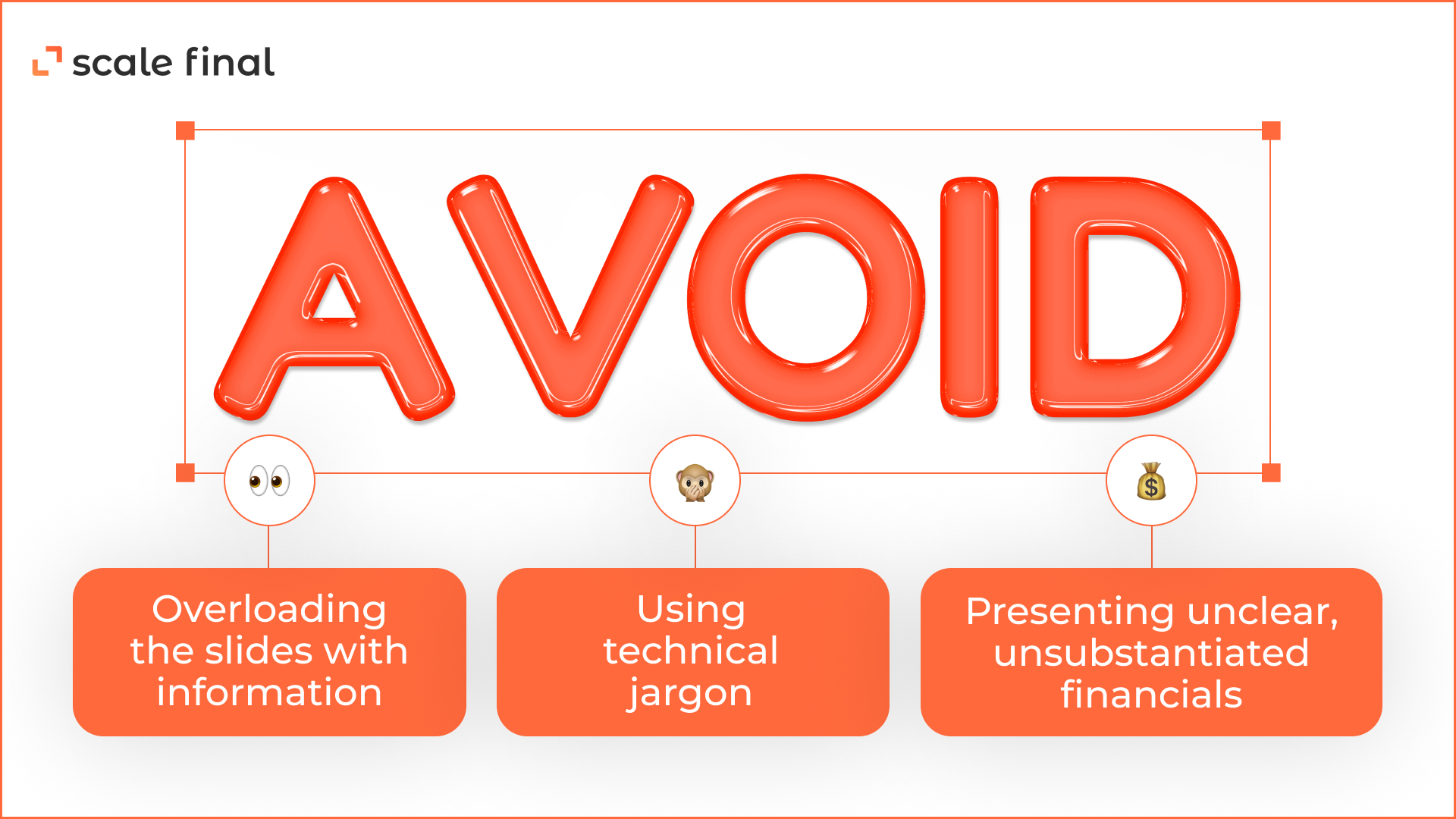Home • Blog • Pitch Deck, or How To Create a Successful Presentation For Investors
Pitch Deck, or How To Create a Successful Presentation For Investors
You have a brilliant idea for a product or have already developed one. You need to market it, so you need to scale up. Where will the money come from? Investments.
To achieve the goal, your product shouldn’t be amazing and promising only on paper, but a great opportunity for the money to flow in. You need proof, be it a talented team, a solid business plan, data, or something else, to ensure investors see it as an opportunity. It’s nothing more than a business where investors need to understand that their contribution is not free but will bring profit and revenue.
A great communication tool has been invented for this. It is designed to help entrepreneurs and investors meet and make this opportunity a reality. It’s a pitch deck, a concise presentation about your product that bridges the gap between the tangible and the intangible.
This pitch deck is pretty mundane, and as with all basic things, you must master it.
There are countless examples of successful pitches, some of which we’ll share with you in this text.
We are discussing this because we just founded a TechScale Hub, an investment hub and an accelerator.
You’re about to find out what we expect from our applicants. They expect us to show them the way and how to make it.
What is a Pitch Deck?
A pitch deck is a business presentation typically of 10 to 20 slides that gives an overview of your company, business approach, notable achievements, and vision for the future. The number of slides is not strict, and even the content of it depends on your purposes, from presenting your company online to showcasing your startup at events like demo days.
Yet, there are some similarities in investors’ expectations for a successful pitch deck presentation, which are highlighted in the text below.
To overview them, a pitch deck must be:
- About your business journey
- How it provides an opportunity for investors
- It should be concise.
10 Musts For a Pitch Deck Presentation
As mentioned above, there are some variations depending on the goals and preferences of each investor. However, here are the most important elements you can use as a structure for a pitch deck:
- Problem: The problem your startup is trying to solve.
- Solution: How your product or service solve this problem.
- Product/features: Key features and functions of your product or service.
- Market size: The scope and size of the market opportunity.
- Business model: How your business makes money.
- Competition: An overview of the competitive landscape.
- Go-To-Market Strategy: Your plan to reach and capture your target market.
- Team: The people behind the startup showcasing their skills and experience.
- Traction/Milestones: Evidence of your startup’s progress and successes.
- Fundraising/use of funds: Current funding needs and how the capital will be used.

Individual With a Potential Product vs. Startup With Existing Product
A pitch deck is used to effectively communicate your business idea to potential investors. However, the focus and presentation may differ slightly depending on the stage and target group.
For individuals or early-stage startups, the focus is often on the vision, the problem to be solved and the potential market opportunities.
You need to create a compelling picture of what could be, with a strong focus on the concept and the founder’s ability to execute this vision. This includes:
- uniqueness of the solution,
- founder’s understanding of the market
- initial validation or traction (if any).
The narrative is key at this point, as you may not have meaningful metrics or financials to back up your proposal.
In contrast, established startups will be expected to provide more concrete evidence of their business’s viability, such as:
- traction,
- revenue,
- growth metrics
- a clear path to profitability.
This may include presenting customer feedback, sales figures, partnerships and competitive advantages. The team’s experience and past successes also play an important role in building credibility with investors. Established start-ups should explain how additional funding can boost growth, expand operations or open up new markets.
Regardless of the stage you are at, you should avoid common mistakes such as:

Always aim for simpe, clear and a compelling narrative that engages on both an intellectual and emotional level.
How to create a successful pitch deck for investors

- Have a good story structure and engaging presentation.
The story should be logical and intuitive, so that anyone will follow and understand your business’s journey. Like any story, your pitch should have a beginning, middle and end, with each slide builds upon the last to create a clear narrative about your startup.
- Make it clear and accessible
Avoid industry jargon and complicated language. Your presentation should be understandable even to someone who has no prior knowledge of your field, and present the value proposition clearly and concisely.
- Make it relatable
Focus on the human aspect of the problem you are solving. It’s important that you show a deep understanding of your users’ problems and illustrate how your solution makes a difference.
- Design to stand out
Use compelling visuals to complement and enhance your narrative. People process images faster and remember them longer than text. This means that images can significantly improve the impact of your presentation.
- Showcase your success
Highlight data on paying customers or growth metrics lends credibility to your business. This tangible proof of the suitability of your market fit, and the viability of your business model is often what investors are most interested in.
- Prove a growing business
Provide clear evidence of your business’s growth, revenue generation, customer satisfaction and engagement. These factors are key to convincing investors of the scalability and potential return on their investment.
Investors do take risks, but they are ultimately looking for ventures that promise a high return.
If you can demonstrate your start-up’s potential for exponential growth and a strong market position, it can help achieve their investment goals.
Successful pitch deck examples
Author
-
 ScaleFinal Content Writer
ScaleFinal Content WriterExperienced writer in different domains. I package meaning into words and bring people together. Know how to convey the vision and values of a product in writing. I like reading, movies, sports and blockchain.
View all posts






